The Essential Role of a Sound Editor in Media Production


Intro
In the rapidly evolving landscape of media production, sound is often the unsung hero that can elevate a story from mundane to mesmerizing. The role of a power sound editor is central to this transformation. As creators lean more heavily into rich, immersive experiences for their audiences, understanding the core responsibilities and skill set of sound editors becomes crucial. This article delves into the multifaceted dynamics of sound editing, shedding light on the myriad techniques and technological tools that contribute to this art.
The Essential Skills
A proficient sound editor must possess a diverse toolkit, blending both technical prowess with a strong sense of creativity. This individual's work goes far beyond merely cutting and splicing audio tracks; it encompasses an intricate dance of sound design, editing dialogue, and tying in sound effects that enhance the visual narrative.
Technical Mastery
Mastering industry-standard software is paramount. Familiarity with tools like Avid Pro Tools or Adobe Audition can be the difference between a flat audio experience and a captivating soundscape. Furthermore, understanding acoustics, audio formats, and the principles of sound itself is essential when making decisions that impact the final product.
As we dive deeper into the intricate world of sound editing, we will uncover the nuances of performance, reliability, and user experience in the software that shapes everyday practices. The invaluable contributions of sound editors to modern media cannot be overstated, making this exploration vital for both budding and seasoned professionals.
Understanding the Power Sound Editor
In the eye of modern media production, the craft of sound editing often takes a backseat to the more glamorous aspects like cinematography or directing. However, one shouldn't underestimate the power sound editor’s role in this landscape. They are not merely technicians who adjust audio levels; instead, they're architects of an auditory world that enhances the visuals and pulls audiences deeper into the narrative. It's their job to create an experience that resonates on an emotional level, guiding viewers through the story without them even realizing it.
Definition and Scope
A power sound editor is a professional who oversees the manipulation and enhancement of audio within media projects. This includes a wide array of tasks such as editing dialogue, sound effects, and ambient sounds, smoothing everything into a cohesive audio experience. The editor works closely with other departments, particularly during post-production, to align sound with visuals, ensuring that each element supports the overall narrative.
The scope of this role is broad and can span various projects like films, television shows, video games, and ads. Whether it’s adding the subtle whoosh of an arrow in flight or mixing the background scores that elevate on-screen emotions, their work is essential in pulling together all audio layers. Therefore, understanding a power sound editor's responsibilities is critical for anyone in the industry, especially for those aiming to create engaging and immersive media experiences.
History and Evolution
The history of sound editing is rich, evolving from the days of silent films where live orchestras accompanied the visuals, to today’s intricate soundscapes that utilize advanced technology. In the early days, sound was a purely live performance, and the idea of editing audio was unheard of. With the introduction of synchronized sound in the late 1920s, movies gained a new dimension.
As technology progressed, so did the methods by which sound was captured and edited. The 1970s saw an explosion in sound design with the advent of multi-track recording technology. This allowed sound editors to layer different sounds for a more complex audio landscape. With digital audio workstations now being the norm, sound editing has transitioned even further into a realm that combines artistry and technical skill. Understanding this historical context sheds light on current practices and the tools used today, allowing future sound editors to appreciate the work that came before them, ultimately guiding the direction of their own creativity.
"The best way to predict the future is to invent it." – Alan Kay
This quote sums up the innovative spirit in the world of sound editing. As the landscape of media production shifts with emerging technologies, the role of the power sound editor continues to evolve, reflecting the changing demands of audiences and the capabilities of new tools. With each leap in technology comes fresh opportunities for creativity, and those who are adaptable will thrive in the ever-evolving world of sound.
Essential Skills of a Power Sound Editor
The role of a power sound editor sits at the intersection of art and technology. It's not just about editing sounds; it's about crafting the auditory experience that shapes narratives. This section delves into the essential skills a sound editor must possess to excel in modern media production. While technical knowledge plays a critical part, creativity and attention to detail are the linchpins of outstanding sound editing. When these skills come together, the result can elevate a project from the mundane to the extraordinary.
Technical Proficiency
Technical proficiency is the backbone of sound editing. A power sound editor must be comfortably familiar with various software and hardware. This includes mastering Digital Audio Workstations (DAWs) such as Pro Tools, Adobe Audition, and Logic Pro. Each of these platforms offers unique functionalities that enhance audio manipulation. The sound editor's command over these tools isn’t merely about knowing how to use them. It’s about understanding the intricacies of sound waves, audio formats, and the various types of compression.
In a practical context, technical skills allow sound editors to:
- Efficiently Edit and Sync Audio: Ensuring that dialogue blends seamlessly with visuals requires not only precision but also speed. Technical know-how streamlines the process, saving valuable production time.
- Implement Sound Effects and Music: A keen understanding of audio layering enables editors to incorporate foley, ambiance, and score correctly, resulting in a more immersive experience for the audience.
- Optimize Audio Quality: Through techniques like EQ and noise reduction, technical proficiency aids in enhancing overall sound quality, making professional-sounding outputs a standard.
Creative Sound Design
Creative sound design goes beyond technical skills. It’s about weaving a narrative through audio. The nuances of sound can evoke emotions and set the tone for scenes. A power sound editor must think like a storyteller, using sound to enhance the visual narrative.
For instance, consider the chilling silence just before a jump scare in a horror film. The lack of sound can amplify tension. Conversely, the uplifting orchestrations in a romantic scene can elevate emotional resonance. Some aspects to consider in creative sound design are:
- Layering Sounds: Combining different audio elements creates a complex auditory tapestry that enriches the viewing experience.
- Using Sound to Indicate Change: Sounds can signal transitions in the narrative, such as a heart-thumping score during a tense negotiation or soft melodies during reflective moments.
- Experimentation: Creativity is all about daring to try new things. Unconventional sound choices can lead to memorable moments that stick with viewers long after the credits roll.
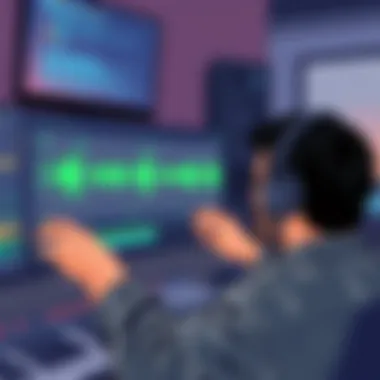
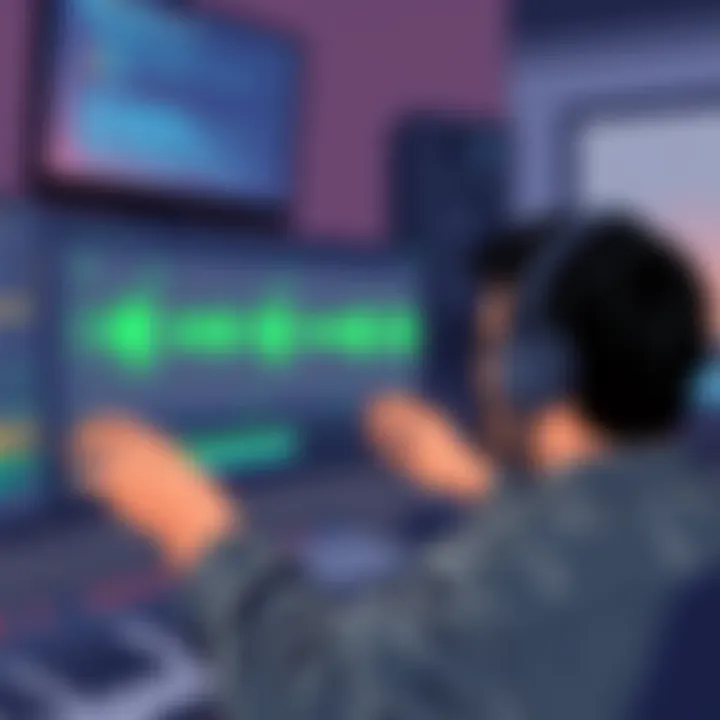
Attention to Detail
In sound editing, the devil is truly in the details. A power sound editor’s attention can mean the difference between a polished final product and one riddled with distraction. This meticulousness involves careful listening, critical analysis, and pernickety edits.
Consider how small inconsistencies can disrupt the viewer's immersion. A pop in the dialogue or an echo that feels out of place can yoke the audience out of the experience. Key aspects of attention to detail include:
- Editing Flawlessly: Each sound must flow into the next without jarring interruptions, ensuring a seamless emotive journey.
- Continuous Collaboration: Sound editors often work alongside directors, sound designers, and producers. Communication about sound intentions helps align expectations and hone focus on detail.
- Iterative Refinements: The editing process isn’t about a single pass. Sound editors often revisit layers repeatedly, making adjustments to create an auditory experience that’s cohesive and compelling.
"Great sound editors catch the subtleties that most people might overlook. It’s these nuances that create truly remarkable media experiences."
In summary, the skills detailed here outline a power sound editor’s foundational competencies. Technical proficiency, creativity in sound design, and meticulous attention to detail aren't just skills—they're the tools of an artist. In the world of modern media production, these attributes equip sound editors to turn simple audio into something powerful, enriching the stories that need to be told.
Core Responsibilities
The responsibilities of a power sound editor are at the heart of effective media production. These roles stretch beyond mere technical expertise; they create the auditory tapestry that accompanies visual storytelling. Understanding these responsibilities is key for anyone looking at pursuing a career in sound editing or working within film and media production.
Sound Editing Techniques
When it comes to sound editing, several techniques stand out that every sound editor should be well-versed in. These techniques not only enhance the overall quality of the project but also support the narrative in profound ways.
Synchronization
Synchronization refers to the precise alignment of audio elements with their corresponding visual cues. This process is crucial since it sets the rhythm and pace of the entire production. An editor's ability to sync sound effects, dialogues, and music with on-screen action can make or break a scene. A key characteristic of synchronization is the attention to timing. If an explosion sound occurs perfectly as a character is hit by debris, that moment becomes impactful. This technique is highly beneficial because it immerses the audience in the story, making them feel the action rather than just witnessing it.
A unique feature of synchronization lies in its ability to convey emotion. For instance, a suspenseful moment paired precisely with escalating music can create an unforgettable impact. On the flip side, poor synchronization can lead to confusion or even detract from the emotional weight of a scene, showcasing just how vital this technique is in sound editing.
Dialogue Editing
Dialogue editing focuses on refining spoken words to ensure clarity, consistency, and emotional expression. This art requires meticulous cutting and rearranging of audio clips to achieve a seamless auditory experience. The most notable benefit of this technique is the clarity it brings; audiences should never struggle to understand characters, especially during pivotal moments.
An important characteristic of dialogue editing is selecting the best takes from multiple recordings. An editor must discern which delivery feels authentic and aligns with the character's intentions. A unique advantage of dialogue editing is its ability to convey subtext through tone and inflection, adding layers to the narrative. However, if done poorly, it risks sounding unnatural or forced, which can take the viewer out of the moment.
Foley Art
Foley art is the process of creating and recording sound effects that enhance the action of the film. From the rustle of clothing to the splashes of water, Foley artists add depth to the viewer's experience. This technique is integral because it brings scenes to life with realistic sounds that are often not captured during filming.
One defining trait of Foley is the creativity involved; sound editors must think outside the box to replicate unique sounds convincingly. For instance, the sound of a sword unsheathing might require more than just metal; it could involve the sound of leather being pulled to evoke appropriate imagery. This artistic flexibility positions Foley as a beneficial addition to any production's soundscape. However, it can be time-consuming and requires a keen ear to ensure every sound fits naturally within the audio mix.
Sound Mixing and Mastering
The final layer of sound production comes down to mixing and mastering. Here, the sound editor balances all audio tracks, ensuring dialogue, sound effects, and music work harmoniously together. Each element must shine without overshadowing another. The mixing phase is critical; it's where the raw sounds are sculpted into a coherent auditory experience, allowing filmmakers to achieve the intended emotional response from the audience. After mixing, mastering ensures the final product is polished and optimized for various playback systems, from cinema screens to mobile devices.
The Impact of Sound on Storytelling
Sound is a formidable force in storytelling. It serves not just as an auditory backdrop but as a character in its own right, shaping the narrative and guiding the audience's emotional journey. Through the meticulous work of a power sound editor, sound can be manipulated to create immersive experiences that elevate the story beyond the visual spectacle alone. This section delves into how sound plays a pivotal role across multiple dimensions of storytelling, including atmosphere, emotion, and tension.
Creating Atmosphere
Atmosphere sets the stage for a narrative, enveloping viewers in a world that feels vibrant and real. The sound editor achieves this through careful selection and layering of sound elements. Whether it's the distant echoes of a bustling city or the tranquil sounds of nature in a serene landscape, the way sound is woven into the fabric of a scene can drastically shift a viewer’s perception.
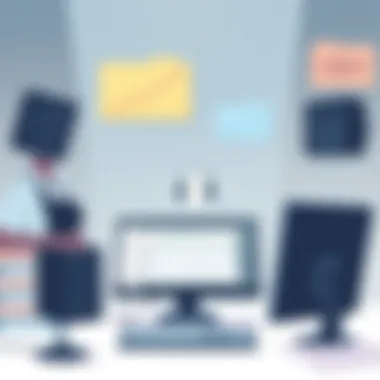
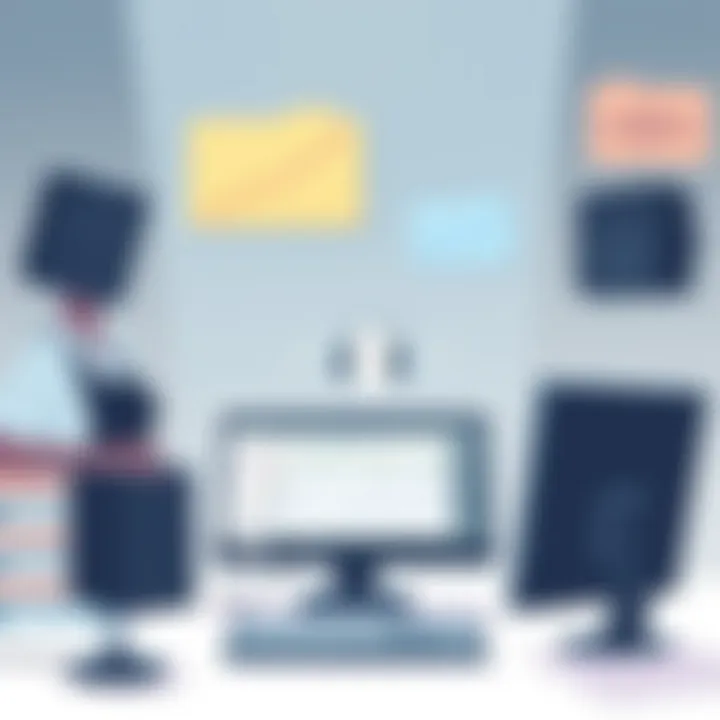
Imagine a horror film where the creaking of old floorboards resonates ominously. It’s not just a sound; it’s a warning signal that something lurks within. In contrast, a romantic scene might feature soft, melodic backgrounds that enhance the warmth between characters. Thus, sound becomes integral, crafting an ambiance that pulls the audience into the story's heart. The right combination of sound elements aids in grounding the viewer, fostering an emotional attachment to the unfolding events.
Enhancing Emotion
Emotion is at the core of effective storytelling, and sound is a powerful means of accentuating how viewers feel. A power sound editor utilizes music, dialogue, and ambient soundscapes to amplify emotional beats within a scene. For instance, a poignant moment can be underscored with a subtle piano score that swells in tandem with the characters' experiences, guiding the audience softly through their highs and lows.
There’s also the strategic use of silence. In high-stakes scenarios, moments of quiet can accentuate tension and anticipation, making the eventual sounds—like a character’s gasp or the sudden blast of a score—hit harder. Sound, in its various forms, shapes the emotional terrain of a film, prompting responses ranging from laughter to tears.
Building Tension and Suspense
The precision of sound design plays a key role in amplifying tension and suspense in storytelling. It’s akin to a finely tuned clock, each tick contributing to the mounting anxiety that envelops the viewer. A power sound editor crafts these auditory cues with deftness, carefully placing subtle sound effects and crescendos that keep the audience at the edge of their seats.
Think about a thriller where the protagonist is stealthily navigating a shadowy environment. The rustle of leaves, the faint dripping of water, or the far-off wail of sirens craft an auditory suspense that grips the viewer. It heightens the stakes, making every movement feel precarious. In essence, sound is the unsung hero of suspense, providing critical hints and emotional undercurrents that can culminate in a powerful climax.
"The sound is a silent partner in the storytelling process, weaving through the narrative to elicit reactions that visuals alone might not achieve."
In summary, sound’s impact on storytelling cannot be overstated. From crafting immersive atmospheres to enhancing emotional depth and building palpable tension, the power sound editor plays a crucial role in shaping how stories resonate with their audience. As viewers, we might not consciously notice these soundscapes, but their underlying influence is what makes a story unforgettable.
Tools and Software for Sound Editing
In today’s media landscape, the tools and software that sound editors utilize are not merely accessories; they are the backbone of effective sound production. From the whispers of a soft breeze to the thunderous clash of battle, using the right software can make all the difference in crafting an immersive auditory experience. This section will explore the significance of these tools, highlighting how they streamline the editing process, enhance creative possibilities, and adapt to the evolving demands of modern media.
Digital Audio Workstations (DAWs)
Digital Audio Workstations, commonly referred to as DAWs, have revolutionized the field of sound editing. These platforms serve as the primary environment for creating, recording, editing, and producing audio content. Each DAW provides an array of features tailored to specific workflows, making them indispensable for sound editors.
- Flexibility and Integration: Most DAWs come equipped with a variety of built-in tools that allow sound editors to manipulate audio tracks in real-time. Popular options like Avid Pro Tools, Ableton Live, and Adobe Audition offer substantial flexibility, enabling seamless integration with various hardware and software solutions.
- Collaboration Features: In a world often defined by remote work, the collaborative capabilities of DAWs cannot be understated. Platforms such as Logic Pro X allow multiple users to work on a project simultaneously, simplifying the editing process for teams spanning across continents.
- User-Friendly Interface: An intuitive interface can significantly enhance productivity. DAWs like FL Studio and GarageBand are often praised for their ease of use, thereby lowering the entry barrier for new sound editors while still catering to the advanced needs of seasoned professionals.
Overall, with the right DAW, sound editors can navigate complex projects, thereby creating soundscapes that enrich narrative and enhance engagement.
Plugins and Effects
When it comes to elevating sound editing, plugins and effects are akin to the spices in a high-end dish. They add layers, depth, and character to audio tracks, refining the end product and supporting creativity in ways that basic tools cannot.
- Types of Plugins: There’s a vast world of plugins catering to different needs. Effects like reverbs, compressors, and equalizers refine audio quality. Companies like Waves and Izotope provide a plethora of plugins which can dramatically alter sound, allowing sound editors to pivot between styles effortlessly.
- Specialized Use: Beyond the basics, some specialized plugins simulate vintage hardware or create unique sound distortions. For instance, Universal Audio plugins allow users to replicate classic analog sounds, appealing to editors who wish to evoke nostalgia in their sound design.
- Customization Options: The beauty of using plugins lies in their adaptability. Sound editors can fine-tune these effects to suit the specific requirements of a scene or project, resulting in a tailored auditory experience that enhances storytelling.
In summary, the right blend of DAWs, plugins, and effects can elevate any sound project from the mundane to the extraordinary, proving that in sound editing, the right tools are indispensable for effective narrative expression.
"Great sound editing isn't just about technical skill; it's about the tools that bring a story to life."
For more on sound editing software, consider checking resources like Wikipedia or Reddit's audio engineering community for insights and recommendations.
Challenges Faced by Sound Editors
Sound editing is a multifaceted realm that demands a high level of precision and adaptability. In a constantly evolving industry, a sound editor’s job encompasses not just the artistic aspects but also significant technical challenges. Addressing these hurdles is vital as they directly influence the audio quality and overall success of media productions. Understanding these challenges equips aspiring sound editors and industry veterans alike with insights necessary for honing their craft.
Balancing Sound and Dialogue
One of the foremost hurdles that sound editors encounter is striking the right balance between sound design and dialogue. Dialogue is often the backbone of storytelling in film and television, meaning it must remain intelligible while integrating with soundscapes and effects. If the sound design overshadows dialogue, it can compromise the narrative and confuse audiences. Yet, too much emphasis on dialogue can lead to a flat audio experience.
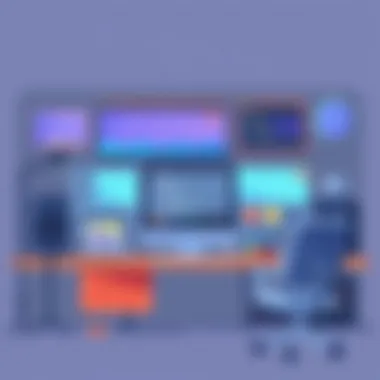
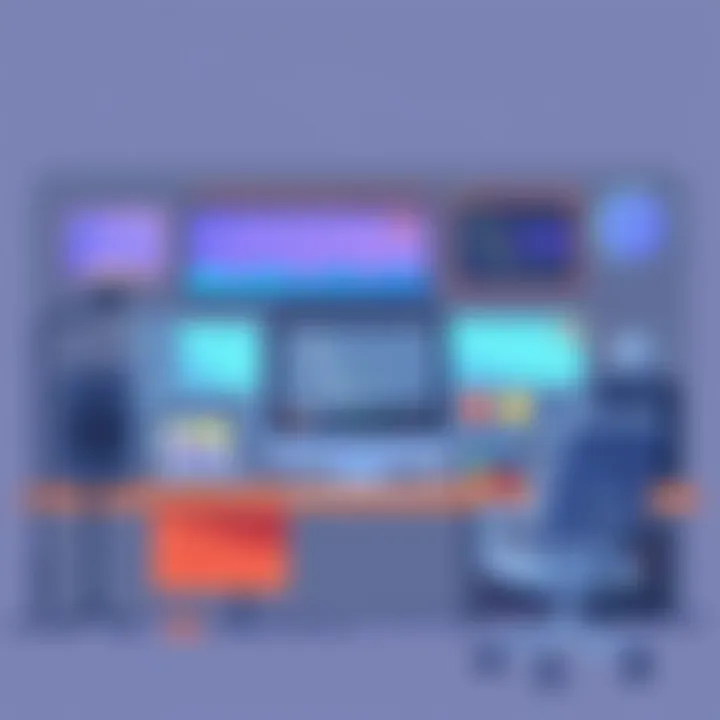
Achieving this balance requires critical listening skills. Consider the scenario of a tense scene where a character whispers crucial information. In this instance, background elements like ambient noise or an ominous score can heighten tension but should not drown out the dialogue. Sound editors employ various techniques, such as EQ adjustments and dynamic range compression, to ensure clarity without sacrificing emotional impact.
"The art of sound editing lies in its subtleties. Just because something sounds cool doesn't mean it works for the scene."
Adapting to Technology Changes
Another significant challenge faced by sound editors involves keeping pace with rapid technological advances. With new software and tools appearing regularly, it can be difficult to stay updated on industry standards. Digital Audio Workstations like Pro Tools or Logic Pro X introduce fresh features on an ongoing basis, yet each update may require sound editors to adapt their workflows.
Furthermore, as listeners continue to shift towards high-fidelity audio formats and immersive soundscapes, sound editors need to embrace technologies such as surround sound and spatial audio. These emerging technologies can pose a steep learning curve but are essential for creating a contemporary and compelling listening experience.
Not learning these new tools can potentially lead to a lack of competitiveness in the industry. Thus, continuous education and practice are imperative. Many professionals take online courses or participate in workshops to shore up their skills in sound design and editing tools, paving the road for innovation in their projects.
In summary, the demands placed on sound editors are ever-changing. Successfully navigating these challenges not only requires a solid foundational skill set but also a commitment to lifelong learning and adaptability.
The Future of Sound Editing
As we look ahead in the thriving universe of media production, the role of power sound editors is poised to evolve significantly. Staying ahead of emerging trends is vital for sound editors who aim to enhance storytelling through sound. It's not just about keeping pace with technology; it’s about anticipating the shifts that will redefine how auditory experiences are crafted and perceived. The future of sound editing is a landscape ripe with potential, characterized by evolving methods and innovative tools that promise to deepen the connection between sound and storytelling.
Trends in Sound Design
The sound design industry is constantly transforming, paving the way for new trends that shape the creative landscape. Noteworthy trends to consider include:
- Immersive Audio Experiences: With the rise of virtual reality and augmented reality, editors are incorporating 3D audio techniques that transport audiences into a deeper sensory environment. This kind of spatial audio impacts how users engage with content, making them feel physically present within the scene, enhancing emotional responses.
- Adaptive Soundscapes: Films and video games are increasingly utilizing adaptive sound design, where the music and effects change in real-time based on viewer interactions. This creates a personalized experience that captures audience attention in unique ways, fostering emotional connections.
- Collaboration with AI: AI-driven tools are appearing, helping sound editors streamline workflows and generate soundscapes more efficiently. Machine learning can analyze and predict the type of sounds that best fit a particular scene, thereby saving crucial time and inspiring creativity.
- Sustainable Sound Practices: As companies become more eco-conscious, the trend towards sustainable sound design practices is emerging. This includes using fewer resources for sound production and sourcing sounds from local environments to minimize carbon footprints.
Incorporating these trends allows sound editors to not only stay relevant but also to set themselves apart in a competitive field.
Emerging Technologies
The technological advancements in sound editing are nothing short of groundbreaking. Familiarity with these emerging technologies sets power sound editors apart and becomes crucial for future projects. Key technologies on the horizon include:
- Advanced DAWs: Digital Audio Workstations are evolving with new features that integrate AI, enhancing functionality. Editors now find features like automatic sound leveling and pitch correction, which vastly reduces editing time and redirects focus onto creative processes.
- Binaural Recording: This technology stands at the forefront of creating life-like sound experiences. Binaural recording captures sound as human ears would hear it, leading to a heightened sense of realism that traditional stereo techniques struggle to achieve.
- Cloud-Based Sound Editing: The shift toward cloud technology offers sound editors unprecedented levels of collaboration. With cloud storage and sharing, team projects become seamlessly integrated, allowing sound editors from various locations to work together as if they were in the same studio.
"The future of sound editing is not just about technology; it’s about the art of connecting with the audience in ways we've yet to fully explore."
- Spatial Audio and Object-Based Mixing: Employing object-based mixing tools can allow editors to manipulate sound in 3D space, producing incredibly detailed sound environments that can adapt to any playback system. This flexibility is especially vital in the world of broadcast and streaming, where sound fidelity can often vary drastically depending on listener equipment.
In summary, the future of sound editing embodies the merging of creativity with cutting-edge technology. As innovations reshape the landscape, it calls for dynamic adaptations among power sound editors. Whether through embracing new tools or harnessing trends that appeal to the audience's senses, the journey ahead is one filled with opportunity and growth.
End
In the world of modern media production, the role of a power sound editor cannot be overstated. Sound editing goes beyond merely piecing together audio clips; it is a vital component that shapes the overall experience of a film, television show, or any other media format. A sound editor's expertise significantly enhances the narrative by intricately weaving sound into the storytelling fabric.
Recap of Key Points
To encapsulate the essence of what has been discussed, here are the core points that highlight the pivotal role of a sound editor:
- Technical Mastery: A proficient sound editor possesses an extensive knowledge of audio tools and software, ensuring that sound effects and dialogue are correctly synchronized and mixed.
- Creative Imagination: The art of sound design is not just technical; it relies heavily on creativity to evoke feelings and reactions from the audience.
- Attention to Detail: Small nuances in sound can make or break a scene. The meticulous nature of sound editing requires an eagle eye (or ear, in this case).
- Impact on Storytelling: Effective sound editing builds atmosphere, heightens emotional responses, and intensifies suspense, ultimately enriching the viewer's experience.
- Tools of the Trade: Familiarity with the latest DAWs and sound editing plugins plays a crucial role in the sound editor's workflow, allowing them to implement complex designs efficiently.
- Facing Challenges: Navigating the fast changes in technology and balancing various sound elements requires adaptability and problem-solving skills.
Final Thoughts on the Role
The landscape of sound editing is as ever-evolving as the media it helps shape. As technology advances, so too does the creative palette available to sound editors. For professionals within the industry, staying abreast of new tools and techniques is not just advisable; it's a necessity.
In an era where the audience's expectations are higher than ever, a power sound editor must be more than a technician; they should be a storyteller in their own right, breathing life into the audio experience. Each click, each swell of music, and every whisper of dialogue serves as a thread woven through the fabric of the narrative.
For aspiring sound editors and established professionals alike, the takeaway is clear: mastering the art of sound editing is not merely about technical ability—it's about understanding the profound role sound plays in storytelling. Embracing this complexity can lead to not only a successful career but also to crafting unforgettable media experiences.







